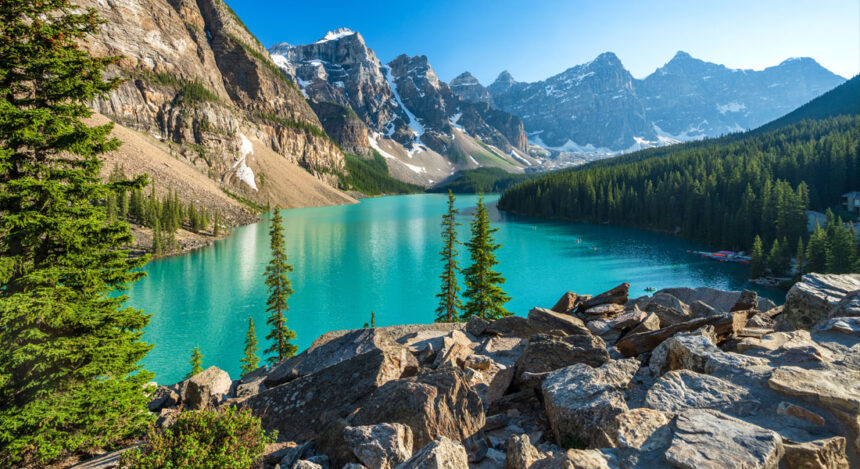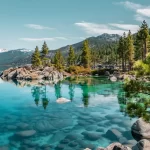As travel evolves in 2025, one destination category stands out above the rest: U.S. National Parks. These protected landscapes, often called “America’s best idea,” are experiencing a surge in popularity, drawing adventurers, families, wellness seekers, and eco-conscious travelers alike. From the rugged peaks of Yosemite to the otherworldly vistas of Badlands, national parks offer unparalleled opportunities for exploration, reflection, and connection with nature. Here’s why national parks are the ultimate travel trend for summer 2025, along with tips to make the most of your visit.
The Resurgence of Nature-Based Travel
The past few years have reshaped travel priorities, with a growing emphasis on sustainable, meaningful experiences. National parks align perfectly with this shift, offering low-impact vacations that prioritize natural beauty and cultural heritage over crowded urban hotspots. According to the National Park Service, 2024 saw over 325 million visitors across its 429 sites, a number expected to grow in 2025 as travelers seek authentic, outdoor-focused getaways.
Why Now? Social media platforms like X have amplified the allure of national parks, with stunning photos of places like Zion’s Angels Landing or Yellowstone’s Grand Prismatic Spring inspiring wanderlust. Meanwhile, post-pandemic travel trends favor wide-open spaces where social distancing is effortless, making parks a safe and appealing choice. Add to that a renewed focus on wellness—hiking, stargazing, and forest bathing are natural stress relievers—and it’s clear why national parks are stealing the spotlight.
Top Reasons National Parks Are Trending in 2025
1. Unmatched Diversity of Experiences
The U.S. boasts 63 national parks, each offering a unique blend of landscapes, activities, and cultural significance. Whether you’re craving adventure, history, or tranquility, there’s a park for you:
-
Adventure Seekers: Scale the granite cliffs of Yosemite National Park (California) or raft the whitewater rapids of Grand Canyon National Park (Arizona).
-
Wildlife Enthusiasts: Spot grizzly bears and wolves in Yellowstone National Park (Wyoming) or manatees in Everglades National Park (Florida).
-
History Buffs: Explore ancient Ancestral Puebloan ruins at Mesa Verde National Park (Colorado) or Civil War battlefields at Gettysburg National Military Park (Pennsylvania).
-
Families: Enjoy ranger-led programs and easy trails at Great Smoky Mountains National Park (Tennessee/North Carolina), a favorite for all ages.
This diversity ensures that national parks appeal to every type of traveler, from thrill-seekers to those seeking a quiet retreat.
2. Sustainable Travel at Its Core
As climate awareness grows, travelers are prioritizing destinations that align with eco-friendly values. National parks are managed to preserve their ecosystems for future generations, making them a guilt-free choice. The National Park Service’s “Leave No Trace” principles encourage visitors to minimize their impact, while initiatives like electric shuttle buses in Zion National Park and solar-powered facilities in Denali National Park (Alaska) reduce carbon footprints.
What’s New in 2025? Many parks are expanding sustainable infrastructure, such as bike-friendly trails and zero-waste visitor centers. For example, Acadia National Park (Maine) is enhancing its car-free carriage roads, perfect for cycling enthusiasts. Travelers can also support conservation by purchasing park passes, with proceeds funding preservation efforts.
3. Wellness and Mental Health Benefits
In an era of digital overload, national parks offer a digital detox and a chance to reconnect with nature. Studies show that spending time in green spaces reduces stress and boosts mental health, and parks deliver this in spades. Redwood National and State Parks (California) invite visitors to walk among towering ancient trees, while Hot Springs National Park (Arkansas) offers therapeutic soaks in natural thermal waters.
Spiritual Connection: Some parks, like Bryce Canyon National Park (Utah), are gaining attention for their meditative landscapes, with hoodoo rock formations inspiring awe. Guided mindfulness hikes and yoga sessions are increasingly offered, catering to wellness travelers.
4. Accessibility Improvements
National parks are becoming more inclusive, with 2025 seeing continued efforts to enhance accessibility. Wheelchair-friendly trails, like those at Shenandoah National Park (Virginia), and sensory guides for neurodiverse visitors are expanding. Grand Teton National Park (Wyoming) now offers adaptive kayaking programs, ensuring that everyone can enjoy the parks’ beauty.
Affordability Factor: An America the Beautiful Pass ($80 annually) grants unlimited access to all national parks and federal recreation sites, making them a budget-friendly option compared to theme parks or international travel.
5. Cultural and Educational Value
Beyond natural beauty, national parks preserve America’s cultural heritage. Chaco Culture National Historical Park (New Mexico) showcases ancient astronomical observatories, while Hawai’i Volcanoes National Park (Hawaii) offers insights into Native Hawaiian traditions tied to volcanic landscapes. Ranger-led talks and junior ranger programs make learning fun for all ages, fostering a deeper appreciation for the land and its history.
2025 Highlight: The National Park Service is launching new interpretive programs focusing on Indigenous perspectives, with expanded exhibits at parks like Glacier National Park (Montana), co-developed with local tribes.
Top National Parks to Visit in Summer 2025
While every park has its charm, here are five must-visit national parks for summer 2025, chosen for their seasonal appeal and unique offerings:
-
Glacier National Park, Montana: Known as the “Crown of the Continent,” Glacier’s snow-capped peaks, turquoise lakes, and wildflower meadows shine in summer. Hike the Going-to-the-Sun Road trails or take a boat tour on Lake McDonald. Book campgrounds early, as demand is high.
-
Zion National Park, Utah: Summer’s warm weather is perfect for wading through The Narrows, a slot canyon hike, or summiting Angels Landing. Use the park’s shuttle system to avoid traffic and enjoy cooler morning hikes.
-
Olympic National Park, Washington: This park’s diverse ecosystems—rainforests, beaches, and mountains—make it a summer gem. Explore the Hoh Rain Forest, relax on Rialto Beach, or hike to Hurricane Ridge for panoramic views.
-
Badlands National Park, South Dakota: Its dramatic rock formations and fossil-rich landscapes are breathtaking in summer’s golden light. Drive the Badlands Loop Road and watch for bighorn sheep. The park’s remoteness ensures fewer crowds.
-
Acadia National Park, Maine: Summer brings perfect conditions for sunrise hikes on Cadillac Mountain, kayaking in Jordan Pond, and biking the Carriage Roads. Savor lobster rolls in nearby Bar Harbor for a quintessential New England experience.
Tips for Planning Your National Park Adventure
To make the most of your 2025 national park visit, keep these tips in mind:
-
Book Early: Popular parks like Yosemite and Yellowstone require reservations for lodging and campsites, often months in advance. Check recreation.gov for availability.
-
Visit Off-Peak: Summer is busy, so aim for early mornings or weekdays to avoid crowds. Shoulder seasons (late spring or early fall) offer milder weather and fewer visitors.
-
Pack Smart: Bring layers for variable weather, sturdy hiking shoes, and reusable water bottles. Sunscreen and bug spray are essential for summer conditions.
-
Respect Wildlife: Keep a safe distance from animals (at least 100 yards for bears and wolves) and store food securely to protect both wildlife and yourself.
-
Use Technology: Download the NPS App for offline maps, trail guides, and real-time updates. Follow park-specific X accounts for weather alerts and road closures.
-
Support Local: Stay in gateway communities (e.g., Springdale near Zion or West Yellowstone near Yellowstone) to boost local economies. Try regional specialties, like huckleberry pie in Montana.
Challenges and Solutions
While national parks are trending, they face challenges like overcrowding and climate impacts. Parks like Arches National Park (Utah) have implemented timed-entry systems to manage visitor flow, and 2025 will see more parks adopt similar measures. Climate-related issues, such as wildfires and melting glaciers, underscore the urgency of visiting responsibly. Travelers can help by carpooling, using shuttle services, and supporting conservation organizations like the National Park Foundation.
Why National Parks Are Here to Stay
The national park boom is more than a fleeting trend—it’s a movement toward reconnecting with nature, preserving cultural heritage, and embracing sustainable travel. As 2025 unfolds, these parks offer a chance to step away from the chaos of modern life and immerse yourself in landscapes that have inspired generations. Whether you’re chasing waterfalls in Olympic, stargazing in Badlands, or learning about Indigenous history in Chaco, a national park visit promises memories that last a lifetime.
Get Started: Choose your park, grab an America the Beautiful Pass, and start planning your summer 2025 adventure. With 63 national parks and countless stories to uncover, the journey begins where the trail meets the horizon.











